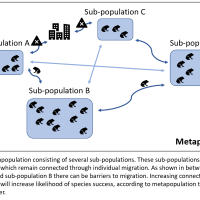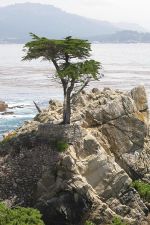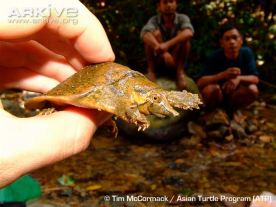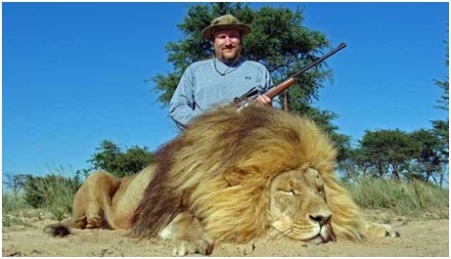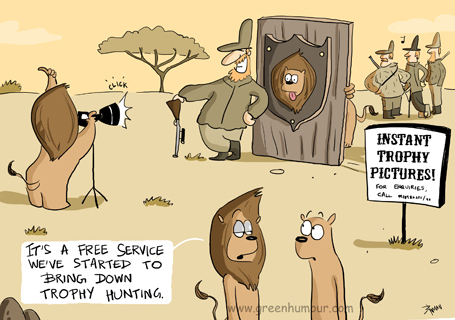The Invasion/Conservation Paradox: What happens when an invasive species is also a threatened species? – Mary F. Paul
Posted: May 5, 2014 Filed under: 2014, BIOL420, Research Essay | Tags: brook trout, chinese wattle necked softshelled turtle, conservation, conservation invasion paradox, ecology, invasive species, Monterey cypress, native species, Palae steindachneri, paradox, Salvelinus fontinalis Leave a comment
Photo sources: Tim McCormack; Harvey Barrison; Thom Benson
In conservation, the term non-native tends to evoke a knee-jerk association with the keywords: unwanted, invasion, eradication, pest. Particularly here in New Zealand, the experience with introduced species has been extremely negative, resulting in the loss of many species and the complete disruption of an ecosystem.
The line between introduced species and invasive species has proven difficult to define as (like many terms in ecology) the definition can be ambiguous and open to subjective interpretation (Colautti & MacIsaac, 2004). Some define invaders broadly as a widespread non-indigenous species, whilst others limit the term to species that adversely affect habitats economically and ecologically (Colautti & MacIsaac, 2004; IUCN, 2013).
Invasive species are one of the three main threats to global biodiversity, along with habitat loss and climate change. The introduction of new species to a non-native ecosystem can have devastating flow-on effects throughout the community and can result in both environmental and economic damages.
But what happens when a species is considered invasive in one area of the world but considered threatened in another?
There are several examples of both plant and animal taxa which have been successful invaders of new locations yet are experiencing declines in their native habitat. As climates continue to shift, this may become a more and more frequent occurrence when native areas become less suitable and new climatic envelopes in non-native areas become accessible. Brook trout, Monterey Cypress, and Chinese wattle-necked softshell turtles highlight these paradoxes. All three of these have managed to become established in island settings where introductions can be particularly consequential.These examples also raise questions about ex situ conservation, or practicing conservation through relocation, and weighing the costs of an introduced species and deciding whether or not to preserve them outside their native range.
Brook Trout
Brook trout (Salvelinus fontinalis) are a species of char native to eastern North America, inhabiting clear, cool freshwater lakes, rivers, streams, and ponds. While their historic range is limited to the East coast of the United States and Canada, they have been introduced to over 47 countries spanning Europe, South America, Africa and Oceania where they are classified as an invasive and damaging species (ISSG, 2014).
Originally introduced to provide recreational and commercial fishing, not all introductions led to establishment but populations are now present throughout the United States, Europe, and New Zealand (EBTJV, 2013). There are many cases of brook trout out competing native species in introduced regions. Non-native brook trout displace bull trout (Salvelinus confluentus) at high elevations within introduced areas throughout the western United States and Canada (Rieman et al., 2006; Warnock & Rasmussen, 2013).
In their native range extending from southern Canada to South Carolina, habitat fragmentation, invasive species, and climate change are causing declines in brook trout populations. Ironically, non-native fish rank as the largest biological threat to brook trout (EBTJV, 2013). Declines in brook trout in native areas have been observed due to interspecific competition and predation on juveniles by brown trout (Salmo trutta) (Fausch & White, 1981). Increased sedimentation and runoff are likely to be contributing factors to the diminished populations, with higher water temperatures due to industrial runoff and climate change driving the populations to higher elevations. Climate change will continue to restrict the native range of the brook trout, increasing minimum elevation by up to 714 m in the southern native boundary, meaning further reduction of populations within native habitats (Meisner, 1990).

Native range (orange) and introduced range (red) of brook trout (Salvelinus fontinalis) in the United States.
Image source: U.S. Geological Survey
Monterey Cypress
Monterey Cypress (Cupressus macrocarpus) is a species of cypress native to California that thrives in mild and humid climates. The historic distribution of Monterey Cypress forests once spanned the1400 kilometer-long stretch of the California coast from Marin County to Baja California (Graniti, 1998).
The present native distribution is now restricted to a dismal 3.2 kilometer strip on the Monterey Peninsula, where only two relict populations remain (Farjon, 2013). According to the IUCN Red List, the species is classified as threatened and vulnerable with the main forces of the reductions being fire damage and the spread of fungal disease (Farjon, 2013). Cypress canker (Seiridium cardinale), a pathogenic fungus, attacks trees in the cypress family by causing girdling cankers and eventually death of the tree (Graniti, 1998).
While the populations in it’s native territory are dwindling, Monterey Cypress has managed to successfully establish elsewhere. Macrocarpa has been introduced all over the world for use as ornamental trees, windbreaks, and timber (Graniti, 1998). One of the most notable introduction was to New Zealand, where populations flourish. Monterey Cypress was introduced to New Zealand in the 1860s and has since naturalized, finding the climate to be more suitable than that of its native habitat (Wassilleff, 2013). But even in New Zealand, Monterey Cypress has suffered losses due to the spread of cypress canker, causing it to lose popularity for use as timber (Farjon, 2013). Despite the influx of canker in the 1970s, Monterey Cypress still persists throughout rural New Zealand (NZPCN, 2010).
Chinese wattle-necked softshell turtles
The native range of the Chinese wattle-necked softshell turtle (Palea steindachneri) is from the Guangdong region in China down to northern Vietnam. The species is established on Mauritius and the Hawaiian islands Kauai and Oahu, thriving in the warm climate (Ernst & Lovich, 2009). Brought over in the 1800s by Chinese immigrants as a food source, the species has been long established, yet little is known about their present abundance (McKeown & Webb, 1982).
P. steindachneri is an introduced species, and is considered to be potentially invasive, although little is known about their impact and there has been limited research into the ecology and behaviour of the species (Engstrom, 2013; Ernst & Lovich, 2009). Because there is no data available on the growth cycle, population dynamics, or predatory behaviour, it is difficult to estimate the impact their introduction has had and could have on native biota. Current research, led by Dr. Tag Engstrom and Dr. Michael Marchetti from the Center for Ecosystem Research, is investigating the distribution of the softshell turtles on the Hawaiian Islands and their effect on the local ecosystem dynamics (Engstrom, 2013; Radford, 2011).
The wattle-necked softshell turtle is currently listed as endangered on the IUCN Red List due to high demand for turtle products throughout Asia, particularly within China (ATTWG, 2000; Shi et al., 2008).The market for softshell turtle meat for use in traditional Chinese food and medicine is the leading cause of the dramatic population declines. The ongoing capture and trade of the endangered species means that it is unlikely to succeed within its native habitat (Radford, 2011; Shi et al., 2008). The research by Dr. Tag Engstrom and Dr. Michael Marchetti is investigating the invasion/conservation paradox of the softshell turtle and its potential for preservation in its “new” homeland, leading the conversation for the conservation conundrum.
Ex situ conservation
Traditional methods of ex situ conservation involve the translocation or removal of part of a population from its natural habitat to a less threatened location for the preservation of genes or populations. Drawbacks associated with traditional ex situ conservation lie in the inability of the species to thrive within its new habitat due to specific environmental needs. Within the invasion/conservation paradox, the threatened species has already found a more suitable non-native habitat where it has successfully established. Instead of kicking out the intruder, perhaps the populations can be managed closely to allow their persistence.
Within the invasion/conservation paradox, there must be an assessment of risks and benefits, as with many practices of conservation ecology. Do we risk an ecosystem to save one alien species? Or do we eradicate the invader – as most methods of conservation teach – but then risk losing that species entirely? The key is understanding the full impact of the introduced species on the ecosystem it is invading. This is often easier said than done. The complexity of ecosystems and our inability to completely understand all underlying interactions and potential effects makes in difficult for us to anticipate all consequences of introduced species. As with the wattle neck soft-shelled turtle, the species has been naturalized for nearly two centuries and we still don’t know what effects, if any, it has had upon the Hawaiian ecosystem. Yet other species, such as the Monterey Cypress in New Zealand, seem to be perfectly at home within their new habitat without having serious consequences for the native flora and fauna. And then there is the Brook trout, that whilst being damaging to native fishes, is likely to persist in introduced areas due to the demand by anglers. Should this be taken as an opportunity for conservation?
Situations where the non-native species is not considered to be highly detrimental to the native biota create an interesting and new concept of ex situ conservation that could challenge the traditional perception of introduced species. This is a new concept in biology, that requires more questions to be asked, more species to be reevaluated, and more exploration into the many paradoxes that come with the responsibility of conservation.
References
ATTWG. (2000). Palea steindachneri IUCN 2013 Red List of Threatened Species. Version 2013.2. Retrieved 1 April, 2014, from http://www.iucnredlist.org/
Colautti, R., & MacIsaac, H. (2004). A neutral terminology to define ‘invasive’ species. Diversity and Distributions, 10, 135-141.
EBTJV. (2013). Eastern Brook Trout: Status and Threats: National Fish Habitat Partnership
Engstrom, T. (2013). The Paradox of Invasive Endangered Species Conservation. Retrieved 1 April, 2014, from http://www.csuchico.edu/cwe/features/tag-engstrom.shtml
Ernst, C., & Lovich, J. (2009). Turtles of the United States and Canada (2nd ed.). Baltimore, Maryland: John Hopkins University Press.
Farjon, A. (2013). Cupressus macrocarpa IUCN 2013 (Version 2013.2 ed.): IUCN Red List of Threatened Species.
Fausch, K. D., & White, R. J. (1981). Competition Between Brook Trout (Salvelinus fontinalis) and Brown Trout (Salmo trutta) for Positions in a Michigan Stream. Canadian Journal of Fisheries and Aquatic Sciences, 38(10), 1220-1227. doi: 10.1139/f81-164
Graniti, A. (1998). Cyrpess canker: a pandemic in progress. Annual Review of Phytopathology, 36, 91-114.
ISSG. (2014). Salvelinus fontinalis (fish) Retrieved 1 April http://www.issg.org/database/species/ecology.asp?si=1226
IUCN. (2013). The ICUN Red List of Threatened Species. Version 2013.2. Retrieved 1 April, 2014, from http://www.iucnredlist.org/
McKeown, S., & Webb, R. (1982). Softshell turtles in Hawaii. Journal of Herpetology, 16(2), 107-111.
Meisner, J. D. (1990). Effect of Climatic Warming on the Southern Margins of the Native Range of Brook Trout, Salvelinus fontinalis. Canadian Journal of Fisheries and Aquatic Sciences, 47(6), 1065-1070. doi: 10.1139/f90-122
NZPCN. (2010). Cupressus macrocarpa. Retrieved 1 April, 2014, from http://www.nzpcn.org.nz/flora_details.aspx?ID=3776
Radford, C. (2011). The endangered wattle-necked softshell turtle (Palea steindachneri) throughout the Hawaiian Islands (Master of Science Thesis), California State University.
Rieman, B. E., Peterson, J. T., & Myers, D. L. (2006). Have brook trout (Salvelinus fontinalis) displaced bull trout (Salvelinus confluentus) along longitudinal gradients in central Idaho streams? Canadian Journal of Fisheries and Aquatic Sciences, 63(1), 63-78. doi: 10.1139/f05-206
Shi, H., Parham, J., Fan, Z., Hong, M., & Yin, F. (2008). Evidence for the massice scale of turtle farming in China. Oryx, 42(1), 147-150. doi: 10.1017/S0030605308000562
Warnock, W. G., & Rasmussen, J. B. (2013). Abiotic and biotic factors associated with brook trout invasiveness into bull trout streams of the Canadian Rockies. Canadian Journal of Fisheries and Aquatic Sciences, 70(6), 905-914. doi: 10.1139/cjfas-2012-0387
Wassilleff, M. (2013). Trees in the rural landscape – Macrocarpa and other conifers Te Ara – the Encyclopedia of New Zealand.
CAN TROPHY HUNTING HELP SAVE AFRICAN WILDLIFE? The “killing for conservation” paradox
Posted: May 2, 2014 Filed under: 2014, BIOL420, Research Essay | Tags: African wildlife, conservation, conservation hunting, hunting tourism, killing for conservation, paradox, trophy hunting Leave a commentBy Mya Gaby
There is much debate, scepticism and controversy surrounding the efficacy and ethics of trophy hunting for African wildlife conservation (Lindsay et al. 2007). Trophy hunting (sometimes referred to as “hunting tourism” or “conservation hunting”) is not a new concept. In fact, many African game parks were originally set up for this sole purpose (Chongwa, 2012; Lindsey, 2007). When envisioning big game trophy hunting in Africa, images of dead lions, rhinoceros, or African elephants spring to mind – iconic mega-fauna that have long been the poster animals for conservation and anti-poaching campaigns (Gittleman et al. 2001; Hutton & Dickson, 2000; Small, 2011).
The recent $350,000 (USD) sale of a Namibian black rhino hunting permit at the Dallas Safari Club in Texas (USA) was hugely publicised and led to a global outcry over the ethics and conservation value of trophy hunting, especially for endangered species. The debate over the economic significance and ecological impact of the trophy hunting industry has been re-kindled and leads to the driving question of this essay; can trophy hunting help save African wildlife?
Polarization amongst the conservation community
Killing wildlife to promote conservation objectives is an emotive topic which has divided conservationists as well as the general public (Hutton & Leader-Williams, 2003; Leader-Williams et al. 2005; Lindsey et al. 2007b; Loveridge et al. 2007) (see “Rhino Hunt Permit Auction Sets Off Conservation Debate“, “Can Trophy Hunting Actually Help Conservation?, “In Defence Of Animals – Trophy Hunting” and “Black Rhino Hunt Auction Won’t Help Conservation“). For some, trophy hunting is not just a conservation issue but a moral one. When it comes to hunting wildlife, Leader-Williams et al. (2005) believe that many individuals have rigid perspectives, regardless of whether hunting is sustainable biologically or provides further conservation incentives.
Trophy hunting as a conservation tool
Despite sounding oxymoronic, when well managed, trophy hunting has the potential to promote species conservation (Lindsey et al.2007a; Loveridge et al.2007) and can be sustainable (Abensperg-Traun, 2009; Packer et al. 2009). When compared to poaching or problem animal control, regulated trophy hunting only accounts for a small proportion of wildlife deaths (Balme et al. 2010) and can generate large revenues (Lindsey et al. 2007a).
Driving conservation efforts outside of protected areas, where an animal has no, or limited, economic value, is extremely difficult (Abensperg-Traun, 2009; Lindsey et al. 2006). For most conservation programmes to succeed, there is a need for economic incentives (Abensperg-Traun, 2009; Lindsey et al. 2006). National economies as well as local communities can benefit from the income generated from trophy hunting as a form of land use (Booth, 2009; Frost & Bond, 2008; Taylor, 2009). In Africa approximately $200 million (U.S.) per year, across 23 countries, is paid by tourists to trophy hunt (Figure 1) (Lindsey et al. 2007a). Trophy hunting is a lucrative industry and is the most profitable form of legal consumptive wildlife utilisation in several parts of Africa (Child, 2000; Lindsay et al. 2006).
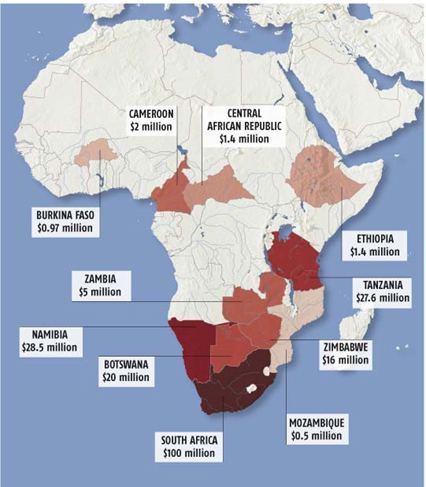
Figure 1: Annual income in 2007 that was brought into African national economies from trophy hunting (Lindsey et al. 2007). Map source: New Scientist; “Bag a trophy, save a species” – http://www.newscientist.com/data/images/archive/2585/25853001.jpg.
Tolerance of destructive or dangerous wildlife by local communities and private landowners may be cultivated if the revenue generated from trophy hunting supplements their livelihoods (Balme et al. 2009; Leader-Williams & Hutton, 2005; Selier et al. 2014) and mitigates the loss of revenue from such species (Lindsey et al. 2007a; Selier et al. 2014). Predatory animals, such as lions or leopards, pose a potential threat to livestock which has resulted in large numbers of these predators being killed illegally by landowners (Abensperg-Traun, 2009; Balme et al. 2009; Leader-Williams & Hutton, 2005). As Balme et al. (2010) discusses in their paper regarding trophy hunting of leopards, trophy hunting and conservation goals are compatible when the profits from harvesting a few individuals are enough of an incentive for people to tolerate larger populations.
Remote or undeveloped areas of land may not be suitable for general ecotourism but may be able to offer trophy hunting. This can generate revenue for conservation and help protect those areas of wilderness from alternative land-use, such as conversion for agriculture. (Leader-Williams & Hutton, 2005; Lindsey et al. 2006). In sub-Saharan Africa, 22% more land is used for trophy hunting than is protected by national parks (Figure 2) (Lindsey et al. 2007a). Whilst some may argue that the revenue generated by trophy hunting is less than the revenue brought in by ecotourism (Sims-Castley et al. 2005), the role hunting parks play in maintaining and protecting large areas of land for wildlife should not be overlooked (Lindsey et al. 2007a).
Trophy hunting safaris also have the potential to be less invasive than ecotourism as more revenue can be generated from less people, as hunter fees generally outweigh the average ecotourism fees (Chardonnet et al. 2002; Baker, 1997; Lewis & Alpert, 1997). This may result in reduced environmental impact as fewer people enter the parks and disturb the wildlife and habitat (Gössling, 2000; Lindsay et al. 2007a; Mayaka et al. 2005).
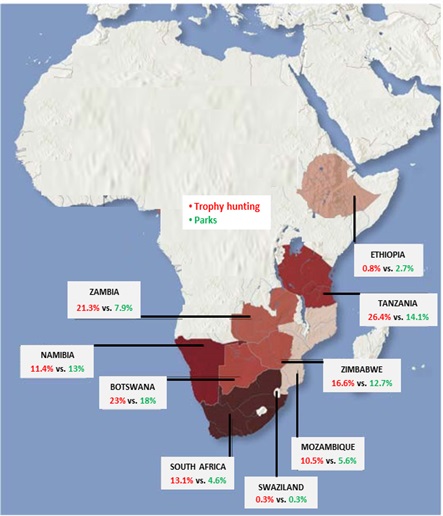
Figure 2: Percentage of land used for trophy hunting vs. parks in Eastern and Southern Africa, 2007. Adapted from Lindsey et al. (2007a) & New Scientist; “Bag a trophy, save a species” – http://www.newscientist.com/article/dn10899-bag-a-trophy-save-a-species.html#.U2HL1_mSyCk .
– Case studies: White & Black rhinoceros
Sustainable trophy hunting, along with strict national conservation measures, has assisted in the recovery of southern white rhinoceros (Ceratotherium simum) in South Africa and Swaziland from >100 to over 20, 000 individuals today (Asenberg-Traun, 2009; Lindsey et al. 2007a). In 1994 the South African southern white rhinoceros population was down-listed from the Convention on International Trade in Endangered Species (CITES) Appendices I to II, which allowed for trophy hunting and live sales (Asenberg-Traun, 2009; Leader-Williams et al. 2005). This provided a financial incentive for private landowners to reintroduce the rhino onto their land where populations then recovered (Asenberg-Traun, 2009; Leader-Williams et al. 2005; Lindsey et al. 2007a; Milliken et al. 2009).
The Namibian government auctions off five black rhinoceros (Diceros bicornis) hunting permits (or tags) per year for conservation funding, as permitted under CITES. Black rhino populations are heavily monitored and only older male black rhinos that are no longer contributing to the gene pool are allowed to be hunted (Leader-Williams et al. 2005). Ageing and increasingly aggressive surplus black rhinoceros males have also become a problem for biological management (Leader-Williams et al. 2005). The sale of these trophy hunting permits are not only endorsed by CITES but also the International Union of the Conservation of Nature, World Wildlife Fund, U.S. Fish and Wildlife Services.
“We recognize that it is not immediately intuitive that trophy hunting– even for endangered species– can be a positive conservation tool that can be used to fight poaching and acquire more habitat for wildlife. We further understand that the very idea of hunting is abhorrent to many people. However, in a world that requires pragmatic conservation solutions, trophy hunting– where well-managed– is frequently one of the most effective conservation tools available.”
Dr. Rosie Cooney, chair of the Sustainable Use and Livelihoods Specialist Group.
Problems associated with trophy hunting
Most of the arguments made in favour of trophy hunting as a valid tool for conservation hinge on whether harvesting is appropriately managed and is sustainable. The conservation role of trophy hunting in Africa can be restricted by a number of problems, some of which include; over-harvesting, biological implications and corruption (Baker, 1997; Lindsey et al. 2007b).
Uncontrolled trophy hunting in Africa has resulted in the extinction of the quagga (a sub-species of the zebra) and has contributed to large population declines of other species, such as the African elephant, lion and leopard (Lindsey et al. 2007a; Loveridge et al. 2007). Consequently, conservationists approach trophy hunting proposals with caution (Leader-Williams et al. 2005). Even if moderate trophy hunting quotas are allocated hunting may constitute additive mortality, in addition to the animals that would have died naturally, which can exert severe population pressure on small populations and threaten population survival (Balme et al. 2010).
The continuous harvesting of trophy animals can have major biological implications for species (Lindsey et al. 2006). According to Allendorf et al. (2008), three types of genetic change can be caused by harvesting wildlife: alteration of population subdivision, through local extirpation of one or more subpopulations; loss of genetic variation; and selective genetic changes. Trophy hunting selects animals from within a species with a particular desirable phenotype (e.g. large tusks or horns). Over time, this can result in imposed artificial selection pressure on that phenotype which, if heritable, can bring about genetic change (Allendorf et al. 2008). However, if there is gene flow from areas where no hunting occurs, such as a national park, then alleles associated with that desirable phenotype can be restored to the population. Therefore, in order to manage populations to achieve sustainability, potential genetic implications need to be addressed with the aim to minimize the exploitative effects of harvest (Allendorf et al. 2008).
Corruption limits the role trophy hunting plays in the conservation of African wildlife (Lindsey, 2008; Mayaka et al. 2004). Whether the revenue generated from trophy hunting escapades actually goes back into conservation, or to further local community development, is also debated (Campbell, 2013). There is also concern that trophies may end up on the black market, or that illegally obtained animal body parts may be hidden under the guise of being legally hunted (Milliken et al. 2009). Underage animals may also be harvested illegally which can have severe biological implications for populations (Lindsey et al. 2013).

Source: Black Rhino Rescue Project – https://www.facebook.com/photo.php?fbid=416148035185669&set=pb.393265544140585.-2207520000.1398916599.&type=3&theater
– Case study: Lion
Excessive harvesting of lions (Panthera leo) and trophy hunting of underage individuals have contributed to lion population declines throughout Africa (Lindsey et al. 2013). The constant removal of male trophy animals from lion populations can also effect lion cub survival rates. Lion cub infanticide is associated with new male replacements taking over a pride (Packer et al. 2009; Packer et al. 2009; Whitman et al. 2004). If high levels of male lion trophy hunting occurs this can potentially indirectly effect the likelihood of cubs reaching maturity due to infanticide from new males continuously entering the population (Packer et al. 2009; Packer et al. 2010; Whitman et al. 2004).
“Needless killing of endangered species for trophies is inherently unsustainable, economically short-sighted, ecologically unsound, and morally wrong. The sooner it ends for lions and other imperilled animals, the better.”
Jeffrey Flocken, International Fund for Animal Welfare (IFAW) Regional Director (North America).
Take home message
Active persecution, habitat loss/modification, competition with livestock or overutilization are considered to be the leading causes that are driving African animals towards extinction (Prins et al. 2000). The costs to try mitigate these negative effects are extortionate. Sustainable trophy hunting can be part of the solution to preventing African wildlife extinctions. By offering economic incentives for governments, local communities and individual land owners, trophy hunting becomes economically sustainable and encourages conservation efforts. Conservation programmes can also be directly funded from the revenue generated through hunting ventures. Problems such as the biological implications of selecting trophy individuals, over-hunting and corruption can limit the conservation benefits of trophy hunting and must be addressed. However, when carefully managed, trophy hunting can be a valid tool used to aid conservation and help save African wildlife.
For further information click links or logo below:
Can trophy hunting actually help conservation?
Killing for conservation – can hunting save the black rhino?
The debate about rhino hunting
References
Abensperg-Traun, M. (2009). CITES, sustainable use of wild species and incentive-driven conservation in developing countries, with an emphasis on southern Africa. Biological Conservation, 142(5), 948-963.
Allendorf, F. W., England, P. R., Luikart, G., Ritchie, P. A., & Ryman, N. (2008). Genetic effects of harvest on wild animal populations. Trends in Ecology & Evolution, 23(6), 327-337.
Baker, J. E. (1997). Trophy hunting as a sustainable use of wildlife resources in southern and eastern Africa. Journal of sustainable tourism, 5(4), 306-321.
Balme, G. A., Hunter, L. T., Goodman, P., Ferguson, H., Craigie, J., & Slotow, R. (2010). “An adaptive management approach to trophy hunting of leopards Panthera pardus: a case study from KwaZulu-Natal, South Africa”. In Biology and conservation of wild felids (oxford biology) (pp 341-352). Oxford University Press, UK.
Balme, G. A., Slotow, R., & Hunter, L. T. (2009). Impact of conservation interventions on the dynamics and persistence of a persecuted leopard (Panthera pardus) population. Biological Conservation, 142(11), 2681-2690.
Booth, V. R. (2009). A Comparison of the Prices of Hunting Tourism in Southern and Eastern Africa (pp 1-40). Joint publication of FAO and CIC, Budapest.
Campbell, R. (2013). Economists at Large. The $200 million question: How much does trophy hunting really contribute to African communities? A report for the African Lion Coalition, prepared by Economists at Large, Melbourne, Australia.
Chardonnet, P., Clers, B. D., Fischer, J., Gerhold, R., Jori, F., & Lamarque, F. (2002). The value of wildlife. Revue scientifique et technique-Office international des épizooties, 21(1), 15-52.
Child, B. (2000). “Application of the southern African experience to wildlife utilization and conservation in Kenya and Tanzania”. In Wildlife conservation by sustainable use (pp. 459-467). Springer Netherlands.
Chongwa, M. B. (2012). The History and Evolution of National Parks in Kenya.The Kenya Wildlife Service in the 21st Century: Protecting Globally Significant Areas and Resources, 29(1), 39-42.
Frost, P. G., & Bond, I. (2008). The CAMPFIRE programme in Zimbabwe: payments for wildlife services. Ecological Economics, 65(4), 776-787.
Gittleman, J. L. (Ed.). (2001). Carnivore conservation (Vol. 5). Cambridge University Press.
Gössling, S. (2000). Sustainable tourism development in developing countries: Some aspects of energy use. Journal of Sustainable Tourism, 8(5), 410-425.
Hutton, J., & Dickson, B. (Eds.). (2000). Endangered species, threatened convention: the past, present and future of CITES, the Convention on International Trade in Endangered Species of Wild Fauna and Flora. London: Earthscan.
Hutton, J. M., & Leader-Williams, N. (2003). Sustainable use and incentive-driven conservation: realigning human and conservation interests. Oryx, 37(02), 215-226.
Leader-Williams, N. & Hutton, J. M. (2005). Does extractive use provide opportunities to offset conflicts between people and wildlife?. Conservation Biology Series Cambridge, 9, 140.
Leader-Williams, N., Milledge, S., Adcock, K., Brooks, M., Conway, A., Knight, M., Mainka, S., Martin, E.B., & Teferi, T. (2005). Trophy hunting of black rhino Diceros bicornis: proposals to ensure its future sustainability. Journal of International Wildlife Law and Policy, 8(1), 1-11.
Lewis, D. M., & Alpert, P. (1997). Trophy hunting and wildlife conservation in Zambia. Conservation Biology, 11(1), 59-68.
Lindsey, P. A. (2008). Trophy hunting in Sub Saharan Africa, Economic scale and conservation significance. Best Practices in Sustainable Hunting, 1, 41-47.
Lindsey, P. A., Alexander, R., Frank, L. G., Mathieson, A., & Romanach, S. S. (2006). Potential of trophy hunting to create incentives for wildlife conservation in Africa where alternative wildlife‐based land uses may not be viable. Animal Conservation, 9(3), 283-291.
Lindsey, P. A., Roulet, P. A., & Romanach, S. S. (2007a). Economic and conservation significance of the trophy hunting industry in sub-Saharan Africa. Biological Conservation, 134(4), 455-469.
Lindsey, P. A., Frank, L. G., Alexander, R., Mathieson, A., & Romanach, S. S. (2007b). Trophy hunting and conservation in Africa: problems and one potential solution. Conservation biology, 21(3), 880-883.
Loveridge, A. J., Searle, A. W., Murindagomo, F., & Macdonald, D. W. (2007). The impact of sport-hunting on the population dynamics of an African lion population in a protected area. Biological Conservation, 134(4), 548-558.
Mayaka, T. B., Hendricks, T., Wesseler, J., & Prins, H. H. (2005). Improving the benefits of wildlife harvesting in northern Cameroon: a co-management perspective. Ecological Economics, 54(1), 67-80.
Milliken, T., Emslie, R. H., & Talukdar, B. (2009). “African and Asian rhinoceroses–status, conservation and trade“. A report forthe IUCN Species Survival Commission (IUCN/SSC) African and Asian Rhino Specialist Groups and TRAFFIC to the CITES Secretariat pursuant to Resolution Conf. Vol. 9, (pp 1-18).
Packer, C., Kosmala, M., Cooley, H. S., Brink, H., Pintea, L., Garshelis, D., Purchase, G., Strauss, M., Swanson, A., Balme, G., Hunter, L., & Nowell, K. (2009). Sport hunting, predator control and conservation of large carnivores. PLoS One, 4(6), e5941
Packer, C., Brink, H., Kissui, B. M., Maliti, H., Kushnir, H., & Caro, T. (2011). Effects of trophy hunting on lion and leopard populations in Tanzania. Conservation Biology, 25(1), 142-153.
Prins, H. H., Grootenhuis, J. G., & Dolan, T. T. (Eds). (2000). Wildlife conservation by sustainable use. (pp – 496). Kluwer Academic Publishers.
Selier, S. A. J., Page, B. R., Vanak, A. T., & Slotow, R. (2014). Sustainability of elephant hunting across international borders in southern Africa: A case study of the greater Mapungubwe Transfrontier Conservation Area. The Journal of Wildlife Management, 78(1), 122-132.
Sims-Castley, R., Kerley, G. I., Geach, B. & Langholz, J.(2005). Socio-economic significance of ecotourism-based private game reserves in South Africa’s Eastern Cape Province. Protected Areas Programme, 6, 1-85.
Small, E. (2011). The new Noah’s Ark: beautiful and useful species only. Part 1. Biodiversity conservation issues and priorities. Biodiversity, 12(4), 232-247.
Taylor, R. (2009). Community based natural resource management in Zimbabwe: the experience of CAMPFIRE. Biodiversity and conservation, 18(10), 2563-2583.
Whitman, K., Quadling, H., Starfield, A., Packer, C. (2004). Sustainable trophy hunting in African lions. Nature, 428: 175–178.



